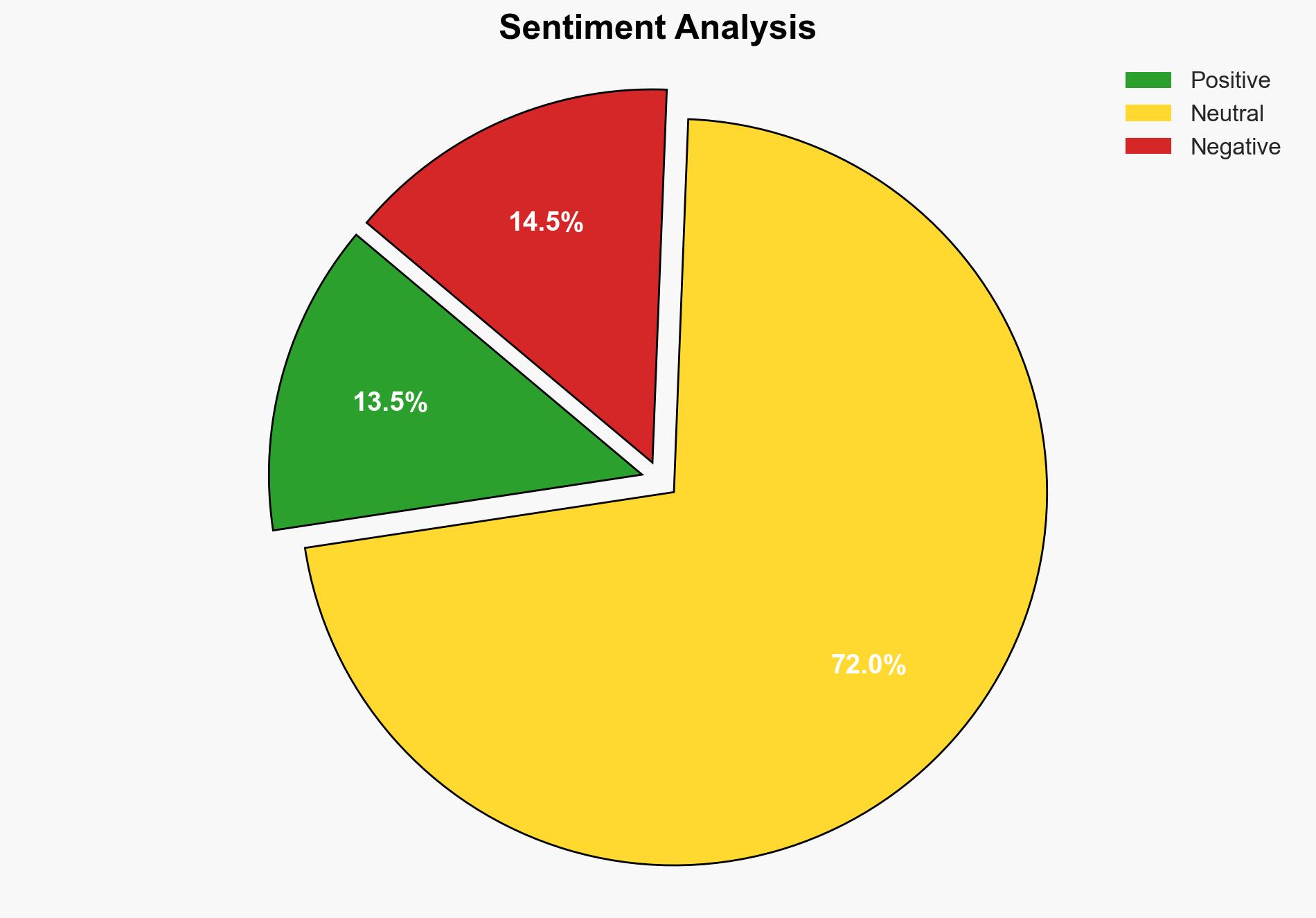US Vice President JD Vance Second Lady to visit Greenland’s Pituffik Space Base for Arctic security briefing – The Times of India
Published on: 2025-03-26
Intelligence Report: US Vice President JD Vance Second Lady to visit Greenland’s Pituffik Space Base for Arctic security briefing – The Times of India
1. BLUF (Bottom Line Up Front)
The visit by JD Vance and Usha Vance to Greenland’s Pituffik Space Base underscores the strategic importance of the Arctic region for US national security. The base plays a critical role in missile warning, missile defense, and space surveillance. This visit highlights the US’s commitment to strengthening its presence and partnerships in the Arctic, countering historical neglect, and addressing emerging threats.
2. Detailed Analysis
The following structured analytic techniques have been applied for this analysis:
General Analysis
The visit to the Pituffik Space Base is a strategic move to reinforce the US’s military and economic interests in the Arctic. Historically, Greenland has been pivotal during World War II and the Cold War, serving as a defense point against Nazi and Soviet threats. The current geopolitical climate necessitates renewed focus on the Arctic, given the increasing interest of global powers in the region. The visit also reflects a shift in priorities from cultural engagements to national security imperatives.
3. Implications and Strategic Risks
The Arctic region’s strategic importance is growing due to climate change, which is opening new shipping routes and resource opportunities. This increases the risk of geopolitical tensions as nations vie for control and influence. The US’s renewed focus on the Arctic aims to counter potential adversaries’ advances. However, neglecting diplomatic relations with regional partners could lead to instability. Additionally, there are risks related to environmental impacts and indigenous rights.
4. Recommendations and Outlook
Recommendations:
- Enhance diplomatic efforts with Arctic nations to foster collaboration and reduce tensions.
- Invest in technological advancements for Arctic operations, including surveillance and environmental monitoring.
- Strengthen partnerships with local communities to ensure sustainable development and respect for indigenous rights.
Outlook:
Best-case scenario: Strengthened US presence in the Arctic leads to enhanced security and economic opportunities, fostering regional stability.
Worst-case scenario: Increased militarization and competition in the Arctic escalate tensions, leading to potential conflicts.
Most likely outcome: Gradual increase in US influence and partnerships in the Arctic, with ongoing challenges in balancing security and environmental concerns.
5. Key Individuals and Entities
The report mentions significant individuals and organizations but does not provide any roles or affiliations. Key individuals include JD Vance and Usha Vance. The Pituffik Space Base and the Space Force are critical entities involved in this strategic initiative.





